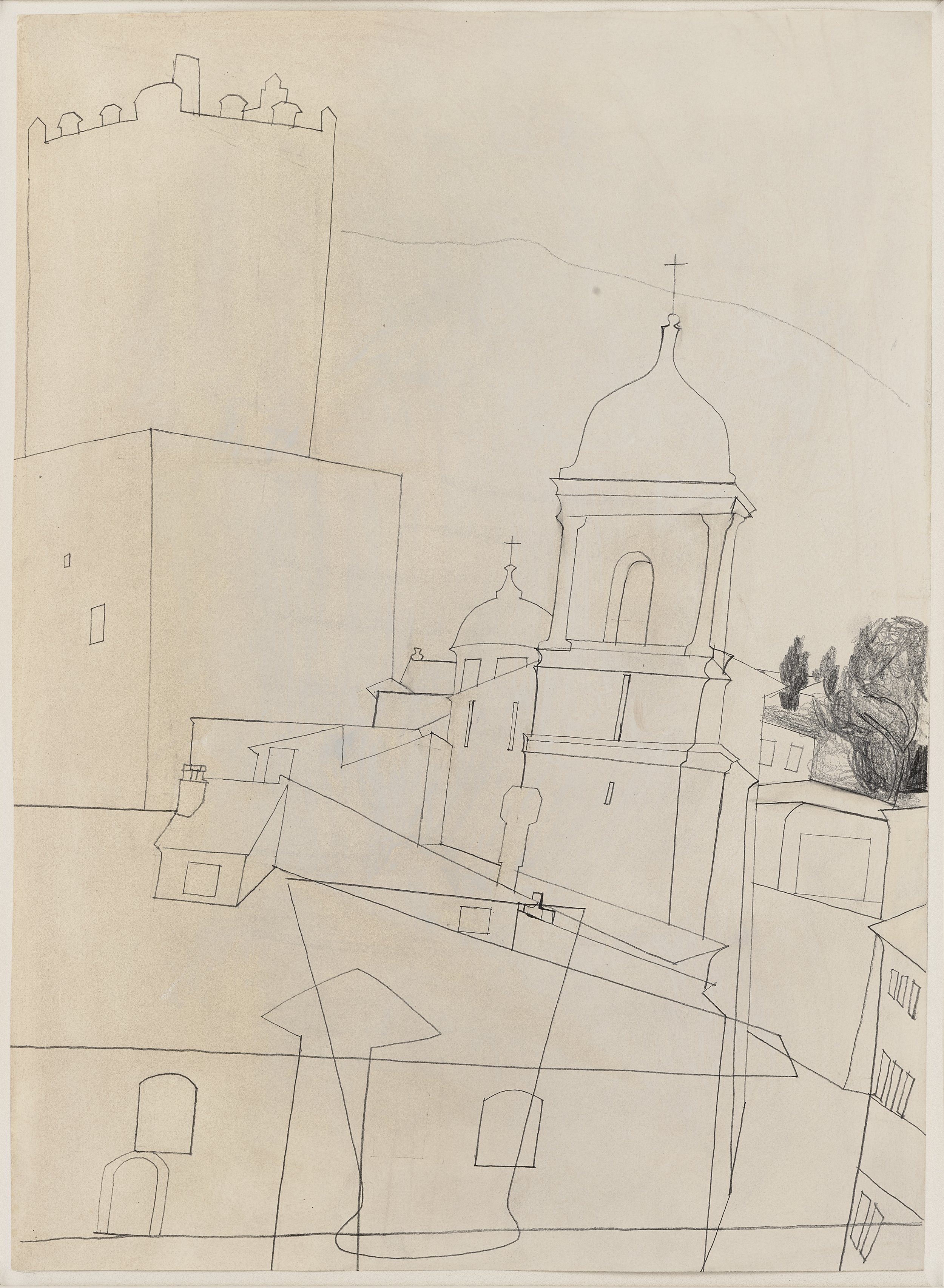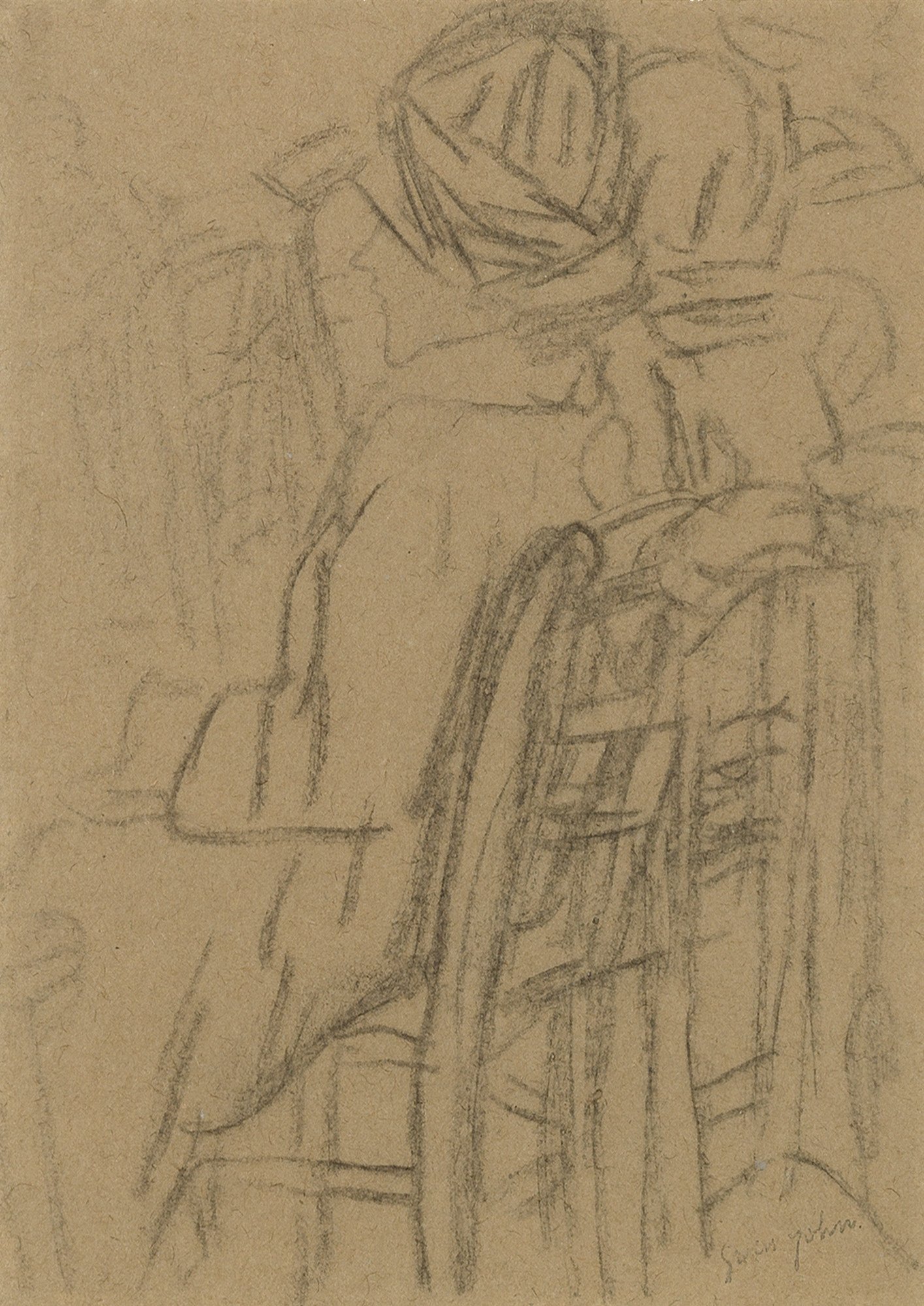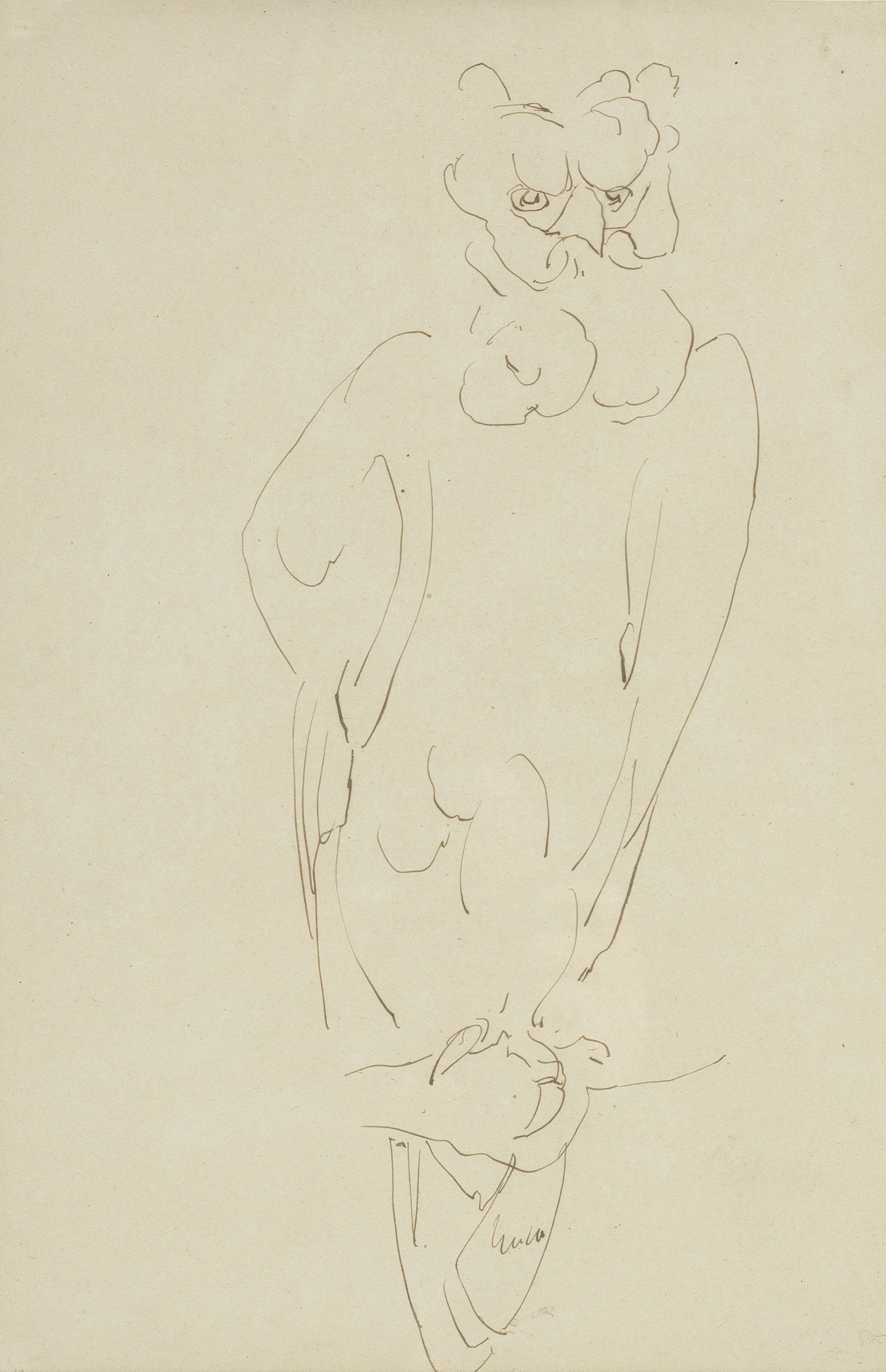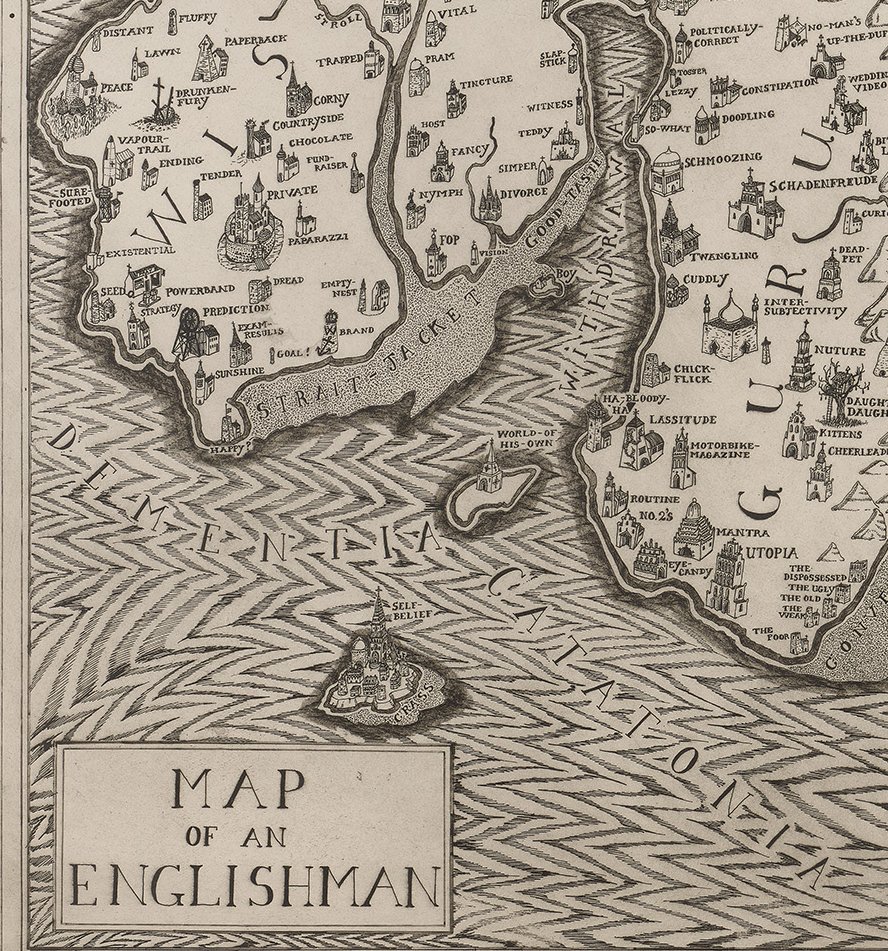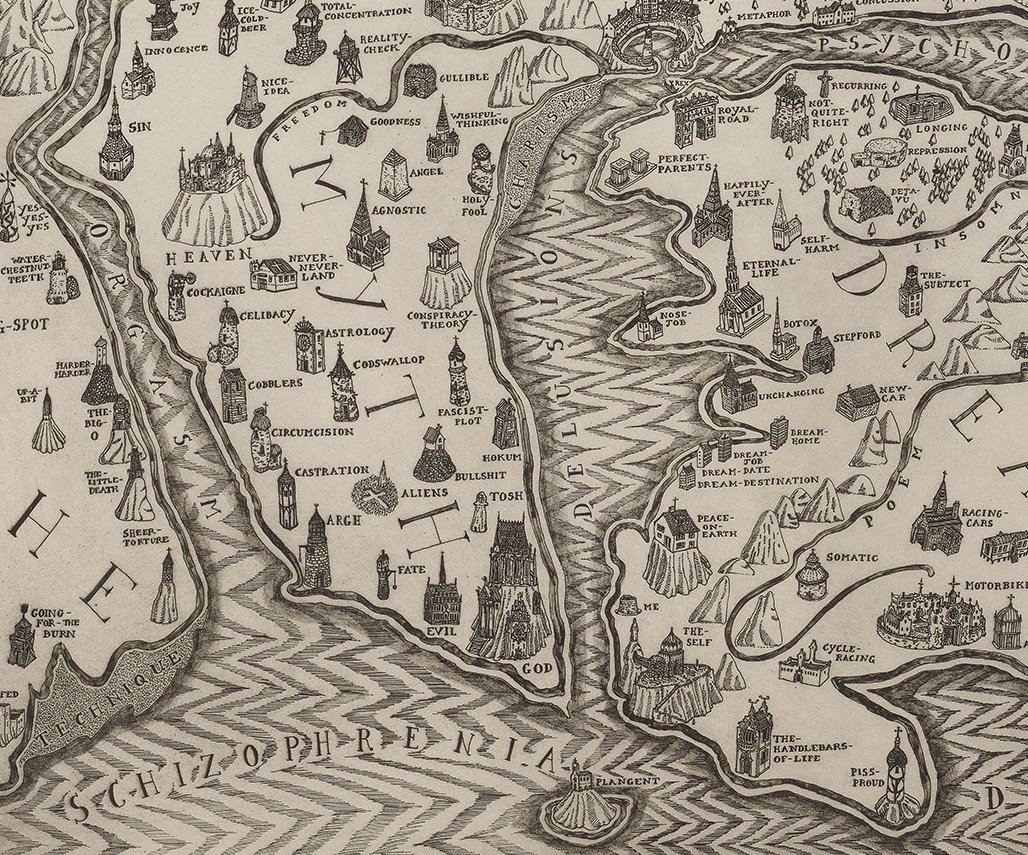John Swarbrooke Fine Art is delighted to exhibit for the first time at the London Art fair.
Our curated exhibition will feature pictures, sculptures and ceramics by pioneering 20th-century artists as well as a selection of contemporary artworks.
Ben Nicholson
Elizabeth Frink
Hans Coper
William Scott
Lucian Freud
Grayson Perry
Duncan Grant
Lucie Rie
Celia Paul
Gwen John
David Jones
Reg Butler
All pricing includes framing but excludes shipping and artist resale right.
For further information please get in touch
William SCOTT CBE RA (1913 – 1989)
Four Pears, 1976
oil on canvas
64 x 76 cm. (25 x 30 in.)
£250,000
-
Exhibited:
Rio de Janeiro, Museum of Modern Art, Color en la Pintura Britanica, Nov. 1977 - Feb. 1979, no. 25; this exhibition later toured to Brazil, Gallery 'B' Fundacao, Cultural de Distrito Federal, 13 - 22 Dec. 1977; São Paolo, Museo de Arte de São Paolo, 14 Feb. - 12 March 1978; Buenos Aires, Museo de Bellas Artes, July 1978; Caracas, Museo de Bellas Artes, 3 Sept. - 1 Oct. 1978; Bogotá, Museo de Bellas Artes, Moderno, Nov. 1978; Mexico City, 9 Jan. - Feb. 1979.
London, Roundhouse Gallery, Irish Art in the Seventies: The International Connection, 26 Feb. - 23 March 1980, no. 63Literature:
Sarah Whitfield (ed.), William Scott Catalogue Raisonné of Oil Paintings 1969 – 1989, vol. 4, London, 2013, cat. no. 804 (illus. p. 193)Following its completion in 1976, Four Pears was extensively exhibited in South America during the late 1970s (see exhibition history), alongside Three Pears and Five Pears, painted the same year. In all three canvases the green fruits are presented upright and on white plates, juxtaposed with simply described bowls for company.
The three pear paintings from 1976, which all measure 25 by 30 inch canvases, anticipate Scott's comprehensive An Orchard of Pears series of 1976 or 1977. The renowned art critic Edward Lucie-Smith wrote a poem for the catalogue, titled Five Morsels in the Form of Pears, which contained many sexual references and guided the reader to consider the fruits on display in this manner. With their luscious shapes, suggestive leaning and prominent stalks it doesn't require much imagination to interpret the pears in the present work as sexual metaphors.
Duncan GRANT (1885-1978)
Composition, 1966
signed with initials, dedicated and dated lower left DG for Desry / 66
oil on canvas board
25.2 x 24.3 cm. (10 x 9 1/2 in.)
£4,500
Peter LANYON (1918-1964)
Rooftops, Italy (Perugia), 1950
signed lower right Peter Lanyon
wax crayon and pencil on paper
38 x 56 cm. (15 x 22 in.)
£28,000
-
Peter Lanyon made this drawing in Italy in the summer of 1950. At the time, he was in the middle of painting Porthleven (1950-51; coll. Tate, London), his first masterpiece of the early 1950s, and in the midst of a huge row with Ben Nicholson and Barbara Hepworth over the heavy-handed imposition of a rule that favoured abstract art at the Penwith Society of Arts. The latter had driven him out of St Ives for a much-needed holiday in the country he considered his second home.
For much of the war Lanyon had been based in southern Italy, where he had learned to speak rudimentary Italian and come to love the culture of the country. On his trip in 1950 he visited Tuscany, Umbria and Venice, and visited many of the principal sites of early Renaissance art and architecture. He later lived in a remote hill town near Rome during the winter of 1953 and was back there again in 1957. On each occasion he made paintings and drawings, of which he made the most of the former when he was back in St Ives and all of the latter in situ. He normally used conté for the drawing, but with this unusually large and colourful work he did something else. Adapting the scrape and scratch method he employed for his paintings of the late 1940s, he laid down a wax ground and then scraped it back to create the buildings and landscape beyond.Lanyon was vehemently opposed to the neat division of art into abstraction and figuration, and nothing infuriated him more than being classed as an abstract artist. And with good reason. Like some other artists of the period, he married the expressive power of abstract painting with elements of landscape. As part of this process, he often repeatedly drew places in radically different artistic idioms, as he did in this case when he made another much more schematic and less colourful wax drawing of Perugia.
Eliot HODGKIN (1905-1987)
Tobacco Plant, 1958
signed and dated lower left Eliot Hodgkin 12.VIII.58
tempera on board
unframed: 20 by 18.5cm.; 8 by 7¼in.
framed: 31 by 30cm.; 12¼ by 11¾in.
Executed in 1958.
£12,500
Howard HODGKIN (1932-2017)
Through a Glass Darkly, 2015-16
oil on wood
27.5 x 41.3 cm. (10 7/8 x 16 1/4 in.)
£250,000
-
Exhibited:
London, Gagosian Gallery, Howard Hodgkin: Last Paintings, June - July 2018.‘Exuberant and unexpected, the paintings range from playfully posh, to the mysterious, the mournful, the Proustian... In "Through a Glass Darkly" (2015-16) the board, glimpsed through vivid cadmium yellow and red slashes, acquires through contrast a tone of smoky purple’ (Jackie Wullschlager, 'Howard Hodgkin: the last picture show', Financial Times, 1 June 2018).
The title of this work, Through a Glass Darkly, is taken from 1 Corinthians, one of the most quoted passages in the bible on the subject of love. The verse suggests that in life, we cannot see things as they truly are, but promises that, in death, we will see God and all things clearly. Other translations of this verse suggest instead, 'For now we see in a mirror dimly'. While intended as a reflection on the mystery of faith, it is a particularly apt metaphor for an artist who made it his life's work to make the intangible visible. Allusions to death and departure appear in the titles of other late paintings, and the paintings themselves are dominated by themes of light and shade.
Ben NICHOLSON OM (1894-1982)
Rome (July 1, 1954), 1954
signed, inscribed and dated verso Rome Ben Nicholson July 1-54
pencil and oil wash on paper
48.8 x 35.4 cm (19 1/4 x 14 in.)
Exhibited:
Paris, Musee National d'Art Moderne, Ben Nicholson, 21 Jan. - 20 Feb. 1955, no. 82; this exhibition later travelled to Brussels, Palais des Baux-Arts, 3 - 27 March 1955; Zurich, Kunsthaus Zurich, 20 April - 22 May 1955.
London, Tate Gallery, Ben Nicholson, 16 June - 2 Aug. 1955, no. 83 (lent by the artist)
£60,000 (Reserved)
Sir Grayson PERRY CBE RA Hon FRIBA (b. 1960)
Map of Englishman, 2004
etching, made from four plates
sheet: 112 x 150 cm. (44 1/8 x 59 1/8 in.)
edition no.3/50, from an edition of 50, plus 10 Artist's Proofs
published by Paragon Press, London, on Rives wove paper
£170,000 + ARR
To view detailed images of the work please click below
-
Map of an Englishman is the first of Perry’s etching on the theme of maps – later followed by Print for a Politician, 2005, Map of Nowhere, 2008, Map of Days, 2012, and The Island of Bad Art, 2013. Consciously referencing the style and lettering of 16th and 17th century cartography, it was partly inspired by seeing an artwork work by Emma Kay, a map of the world drawn from memory, and is also informed by W. Jeffrey’s illustrations for The Pilgrim’s Progress, c.1800, which depict imaginary places such as ‘The Slough of Despond’ and the ‘County of Coveting’.
To make these prints Perry draws directly onto sheets of transparent film in black pen, starting at the top left corner and working his way down to the bottom right. The complexity of his compositions is such that they can take months to complete, allowing time and space for improvisation along the way. The finished image is then transferred onto photo-sensitised etching plates, the scale requiring it be composited from four separate plates. Rather than wiping the plate clean, Perry prefers to leave a little ink on the surface, saying, ‘I like it to have a sort of antique, dirty look.’
Effectively a gigantic self-portrait, instead of places, the map charts a multitude of psychological states, each emotion represented by a church, with other buildings named after curious artefacts of English life such as Call Centre, Car Boot, Classic F.M.. The land resembles the two-halves of the brain, bisected by the river Orgasm. The surrounding bodies of water are named after mental disorders Paranoia, Dementia, Anorexia Nervosa and within the island there is a vast lake called Consciousness and smaller ones named Unaware, Mum and Dad. Self Belief appears to be a prosperous little island, whereas the NHS is eroding into the sea. This work requires concentration to take in, the visual chatter of the words perfectly matching its subject of low-level neurosis. The minute detail requires we press our noses up to the work as we inquire into the artist’s mind.
Perry shows an obvious enjoyment in drawing the buildings, an enthusiasm for architecture which culminated in his building A House for Essex, 2015. There are Russian stave churches, phallic towers, a lighthouse and a castle called Red Mist. The map features just a few real people. Protective feelings towards Perry’s Daught-Daught are signified by a tree house, neighboured by the church of Kittens. Elsewhere, tucked behind the cathedral of Bad Reviews are the modest dwellings of three critics - Searle, Collings and Jones – Perry’s harshest critic Jonathan Jones banished to an island which threatens to float off the map.
Gwen JOHN (1876-1939)
Two Girls Seated in Church
stamped with estate stamp lower right
charcoal on paper
16.5 x 12.5 cm. (6 1/2 x 4 15/16 in.)
£6,500
Dame Elizabeth FRINK CH DBE RA (1930-1993)
Homme Libellulle 1, 1965
signed and numbered 3/6
bronze
height: 41 cm. (16 in.)
£25,000
Reg BUTLER (1913 - 1981)
Study for Girl with a Vest, 1959
signed with monogram, numbered 6/8 and stamped with foundry mark
bronze
height: 56cm. (22in.)
£16,000 + ARR
Celia PAUL (b. 1959)
The British Museum, 1996
oil on canvas
136.5 x 152 cm. (53 3/4 x 60 in.)
£25,000 + ARR
Henri GAUDIER-BRZESKA (1891-1915)
Owl
pen and ink on paper
34.5 x 27.5 cm. (13 9/16 x 10 13/16 in.)
Formerly in the Collection of Artist Barry Flanagan
£8,500
Sir Grayson PERRY CBE RA Hon FRIBA (b. 1960)
Untitled, c. late 1990s
glazed ceramic
54.9 x 26 cm. (21 5/8 x 10 1/4 in.)
£95,000
To view images of each side of the present work please see below
Ben NICHOLSON OM (1894-1982)
1967 (pillar in monastery at Patmos)
signed, titled and dated verso pillar in monastery at Patmos/Ben Nicholson/1967; signed again, further titled and dated on the backboard NICHOLSON 67/(pillar in monastery at/Patmos)
oil wash and pencil
66 x 51 cm. (26 x 20 1/8 in.) including the Artist's prepared backboard
£45,000
John MINTON (1917-1957)
Portrait of a Man
pen and sepia ink on paper
38 by 27 cm. (15 x 10 2/3 in.)
£6,500
John PIPER CH (1903-92)
Venetian Palazzo, c. 1960
signed lower right
pencil, pastel, watercolour and gouache on paper
36 x 51 cm. (14 x 20 in.)
£13,500
Craigie AITCHISON CBE RSA RA (1926-2009)
Tethery, 2007
titled and dated
pencil and crayon on canvas-board
17.8 x 12.7 cm. (7 x 5 in.)
£5,250
LUCIAN FREUD OM CH (1922-2011)
Bella in Her Pluto T-Shirt, 1995
signed with initials in pencil, numbered 1/36 (there were also 12 Artist's Proofs),
etching on Somerset wove paper
published by Matthew Marks Gallery, New York
plate: 69 x 60 cm. (27 x 23 2/3 in.)
sheet: 81 x 72 cm. (31 4/5 x 28 1/3 in.)
£25,000
Henri GAUDIER-BRZESKA (1891-1915)
Windmill
pencil on paper
18.5 x 18.5 cm. (7 5/16 x 7 5/16 in.)
£2,500
LISA BRICE (B. 1968)
Drag, 2007
signed with the artist's initials and dated lower right LB 07
oil on paper
41.6 x 59.3cm. (16 3/8 x 23 1/8 in.)
£25,000
Caroline WALKER (b. 1982)
Cove, 2014
signed, dated and titled verso
oil on board
32 x 30 cm. (12 5/8 x 11 3/4 in.)
£36,000 + ARR
David JONES CH CBE (1895-1974)
Knight in Armour, c. 1930
inscribed verso for the wricked dragon in wraps on the xystus or/newly-strigil'd, bow-shanked, up from the plunge, praefectus/alae, half, pay
pencil on paper
32.5 x 18 cm. (12 13/16 x 7 1/16 in.)
£2,750









